No Results Found
The page you requested could not be found. Try refining your search, or use the navigation above to locate the post.
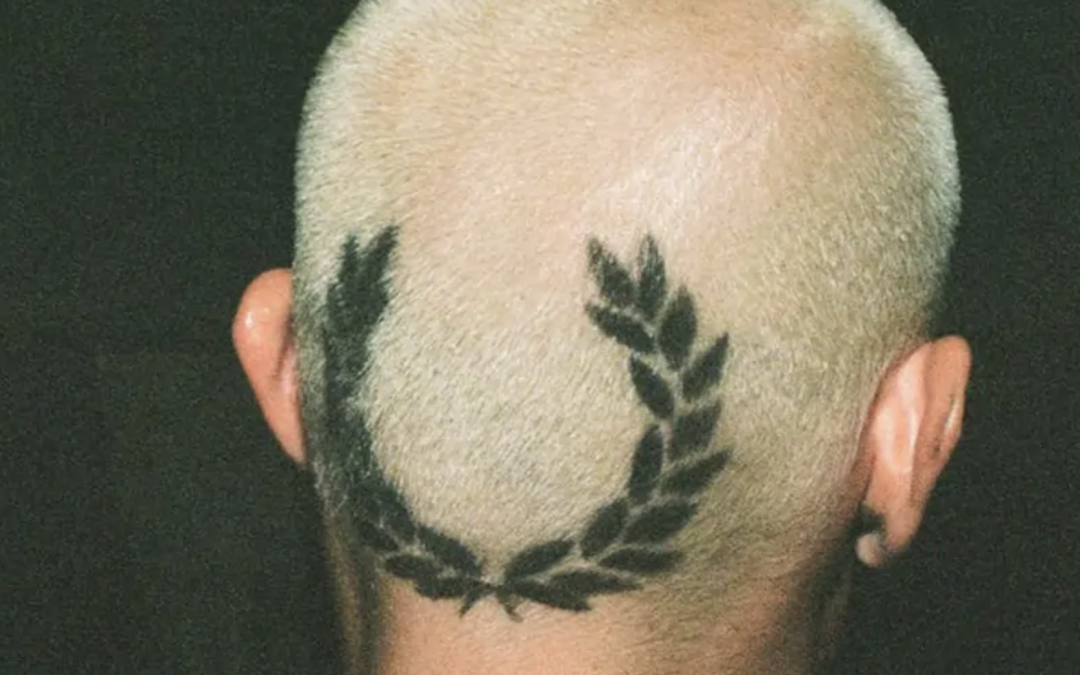

Longer lengths are out and the buzzcut is back in a big way, if search data on Google is anything to go by. Following the reveal on social media of Mr. Styles’ new look, searches for ‘buzzcut hair’ have risen 158 per cent worldwide in the last week. New research by hair salon comparison site PriceListo reveals that online searches for ‘buzzcut’ skyrocketed to over double the average volume in one week, with searches for ‘Harry Styles hair’ also increasing by a 205 per cent.
While hair pros across the globe will be familiar with the iconic cut, when it comes to delivering a brilliant buzzcut, there is an art to doing it the right way. “When executing these cuts, despite claims of quick simplicity, it’s crucial to take your time to avoid missing hairs,” says It List The Business Builder 2023 winner, Charles Rose of Crate Chesire. “Executing a buzzcut requires attention to detail, thorough consultations, and consideration of the client’s preferences for length and style,” he adds. “Regular maintenance, proper aftercare, and communication about expectations contribute to a successful buzz cut experience.”
Though not so straightforward as it may initially seem, for many clients it gives a chance to press reset on their style. “For my clients it’s always a good way to start again when they are unsure what style to go for next,” says Most Wanted Legend, Jody Taylor. “They have to go through so many different lengths when growing it out, so sometimes they will find a style they may not have ever thought about.”
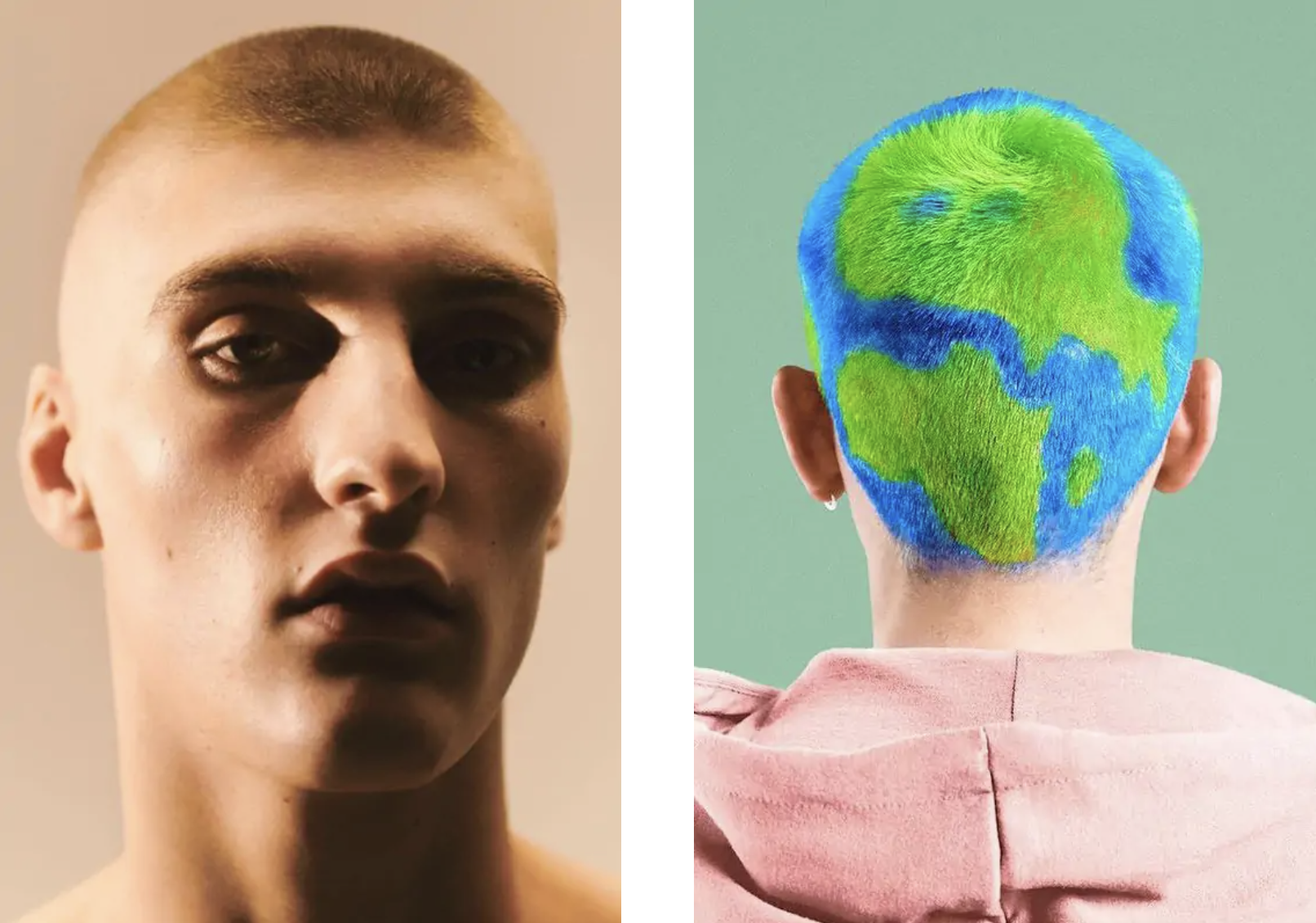
Before reaching for the clippers, Charles advises checking the client’s hairline and preparing them for potential changes to ensure a thorough consultation.
When it comes to cutting techniques, move the blade or guards in all directions to achieve a uniform length. “Don’t just take the guards upwards; go against the hair growth when needed,” he states. “Discuss with the client whether they prefer sharp lines or a faded look around the front and back, using a razor for precision.” It’s also important to consider how short they want to go or if they prefer a gradual taper. “Buzzcut techniques, including fading and tapering, can be applied to soften or sharpen the overall look,” Charles adds.
Managing buzzcuts post-appointment will vary for each client. Charles points out that while some may appreciate the quick regrowth, others will prefer a more regular schedule. “Advise clients on the potential need for more frequent visits compared to their previous style,” he advises.
When advising on proper after care, always recommend a scalp-friendly shampoo and keeping head and hair hydrated. Depending on the desired length, product application is possible. For extremely short cuts like a grade two, keeping the scalp hydrated is essential to prevent dryness.
Though there may be more to the buzzcut than meets the eye, the roots in freedom and empowerment remain as true today as when the radical cut became popular with subcultures during the ’50s and ’60s. “If you haven’t shaved your head before it’s definitely something you need to do at some point in life – I always find it quite liberating with my own hair,” adds Jody.
Fellow Most Wanted winner and BaByliss PRO ambassador Ky Wilson also appreciates the power in starting from scratch. “Amen to this! Remove all the sins,” he exclaims. “Anyone that mentions it in my chair I give them the clippers and get them to do the first bit themselves just to feel the feels. Then I take over of course!”
The page you requested could not be found. Try refining your search, or use the navigation above to locate the post.
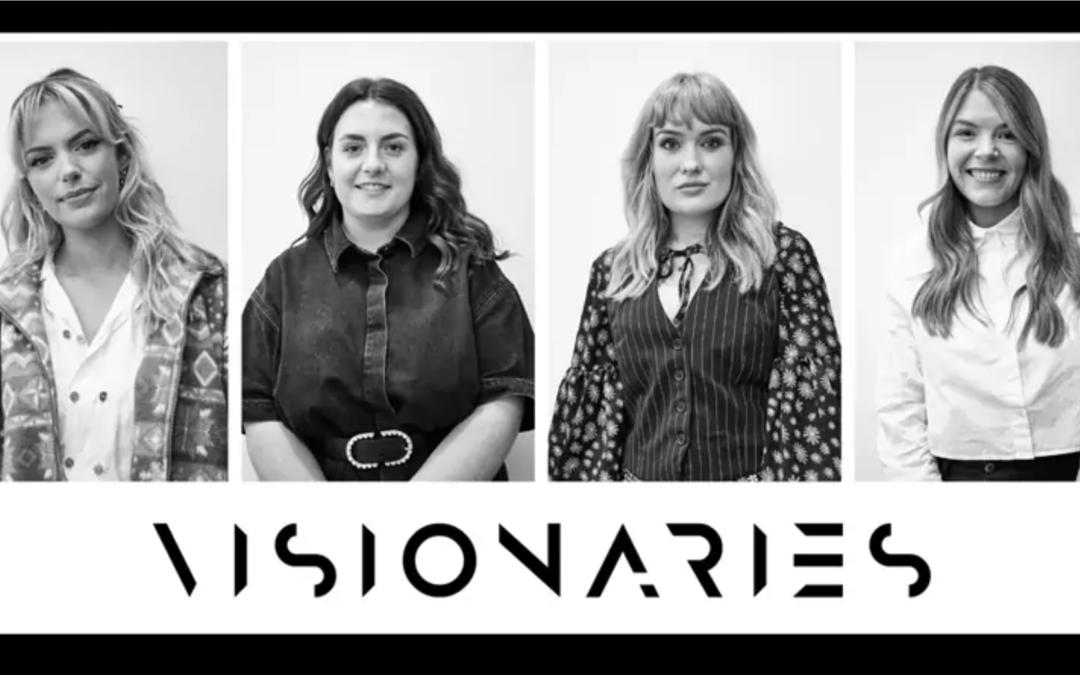

Finalists for the programme gathered at the Westrow Academy to compete for a place on this year’s team. A year-long mentorship programme, directed by Revlon’s global ambassador, Mark Leeson, gives aspiring stylists the chance to supercharge their skill set. Opportunities include photo shoots, shows and demonstrations, as well as the chance to attend colour and cutting courses and social media workshops.
Judges Richard Darby from Mark Leeson, Emma Simmons from Salon 54, Steven Smart from Smart:EST 73 and Marney Lian from Gritt watched on as 18 finalists demonstrated their cutting and colouring skills in two heats. The day’s challenge was to recreate the photographic looks the finalists had submitted as part of their entry on the competition floor.
The Visionaries Team for 2024 is…
Commenting on the quality of the finalists, Mark Leeson said: “This was an awe-inspiring group of individuals. Calm under pressure but impressively creative, they came up with some seriously promising work. Being part of the Visionaries is an unmissable chance to push outside your comfort zone and experience things you’d never have believed were possible. I’m fired up for the year ahead. Our previous finalists have all gone on to flourish so let’s see what 2024 has in store for our next talented quartet.”
For their first assignment, the four Visionaries will be treated to a two-day colour and cutting course at the Revlon Academy in Leeds. “The Visionaries programme offers opportunities like no other. We have an incredible year lined up, all geared around giving this skilled team the tools, knowledge amd confidence to elevate their careers,” says Matt Horder, general manager of Revlon Professional UK & Ireland. “We’re excited to see this year’s lucky four absolutely shine!”
Fresha introduce a brand-new way to keep appointments adding up
Salon scoops three trophies at extensions brand’s 12th annual competition
AUTHENTIC BEAUTY CONCEPT was inspired by hairdressers, artisans and people who share the same values. Will you join the movement?
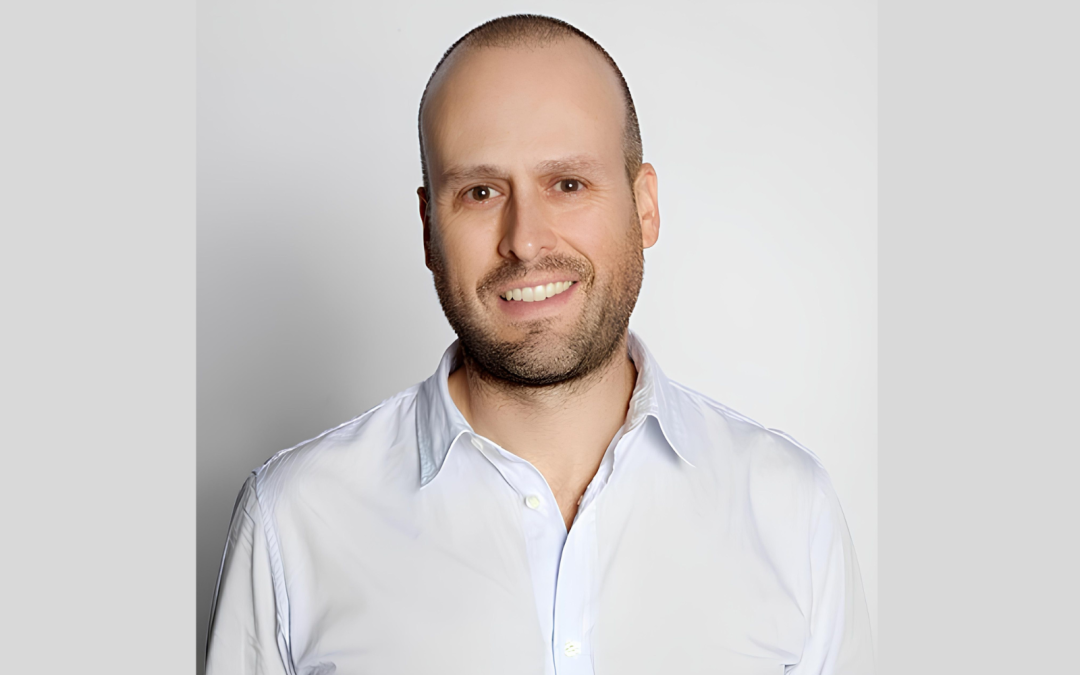
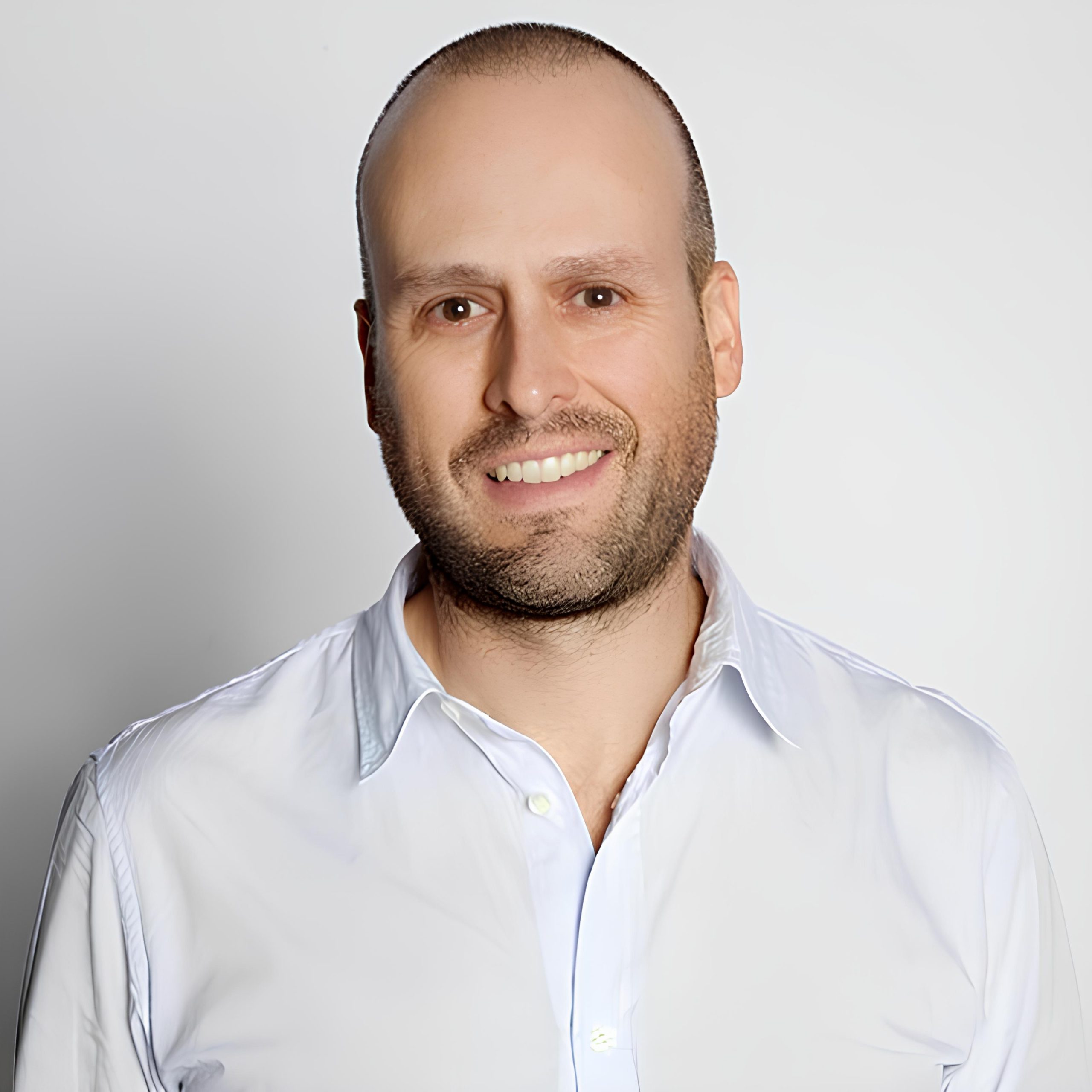
Thought about your colour bar lately? It’s where your colourists mix the concoctions that command some of the highest charges on your treatment menu, but it’s also where your business haemorrhages money, too. Salon owners estimate that at least 40 per cent of the colour they buy goes to waste. And that’s why Francisco Gimenez has been thinking about your colour bar too.
The Mexico City-born tech entrepreneur is the brains behind the Yuv Lab, billed as the first smart, bespoke hair colour lab for salons and freelance colourists, looking to streamline and automate the colour formula process dramatically to reduce waste and costs while making clients happier.
Gimenez, whose engineering background predisposes him to problem-solving “I’ve been called a disruptor, but I have never set out deliberately to challenge things,” he says), had spent years thinking about and observing professional colour during his time with the customised hair colour business, eSalon. He had seen how colourists always mix colour by hand, a process that is not only susceptible to improvisation but that almost automatically creates a surplus of unused formula. It tends to taketwo to three shades to mix a client’s colour but only about half or a quarter tube of each shade is used. If colour runs out mid-application, it’s normal to run back to the colour bar and mix the full amount again, in order to get the same consistency. Says Gimenez: “What’s left in the mixing bowl after colouring a client’s hair gets thrown out, as does unused product in the multiple bottles of colour opened to create that person’s shade, since opened bottles of colour have a short shelf life before the formula begins to oxidise. If what’s left over isn’t quickly used on another client, it simply gets thrown away.
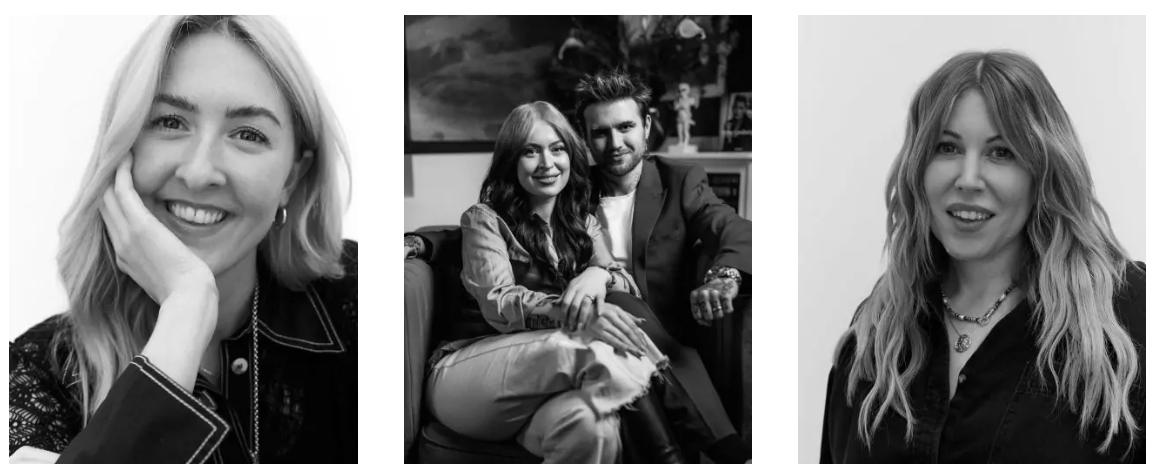
On top of that, salons typically purchase a professional colour brand’s full portfolio of 100+ shades, many of which are nearly identical with only very subtle pigment differences,” he continues. “Itopened my eyes to all the unnecessary spending and excess waste that’s occurring, and I thought, there has to be a better business model.”
Gimenez’s solution is the Yuv Lab (pronounced “you’ve”), a patent-pending refillable cartridge-based dispenser that’s light enough to carry under your arm (making it perfect for freelancers, too), and that can store and dispense millions of customised colour formulations. Instead of mixing colour by hand, Yuv does it all with the touch of a button. The machine’s sensors – Gimenez had a whole team of robotics and manufacturing experts working for him – measure and calibrate exactly how much of each colour is to be used on a client, then it stores that information online for future visits, eliminating the need for keeping clients’ formulas on hand-written notecards (which as we all know, can often be marked incorrectly or get lost altogether).
Yuv uses refillable aluminium cartridges, rather than single-use plastic bottles, ticking important sustainability boxes – every delivery includes prepaid return shipping labels to send empty cartridges back to the company. The colour itself (which Gimenez knew had to be world-class) was created by a speciality colour formulation lab in Switzerland. It provides up to 100 per cent grey coverage, using ME-PPD technology to dramatically reduce allergic reactions. The Lab is also equipped with all the developers needed, including a cream bleach, and offers the flexibility to substitute ingredients to create semi-permanent formulas.
But here’s the bit that’s truly revolutionary: you don’t purchase any colour inventory upfront. Yuv Lab runs on a ‘pay as you dispense’ model, meaning salons and freelancers will only be charged for what they use, eliminating paying for dead stock and cutting down on waste. The smart system tracks colour consumption over time and adjusts consignment deliveries to match what you use, streamlining inventory and saving precious shelf space.
“We bill for the grams of colour used, which is precisely tracked by the Yuv Lab machine and stored in your online account,” explains Gimenez. “The cost per full tube of colour is roughly the same as what the other major salon brands charge, but it’s pay-as-you-go colour, so you get better value because each tube lasts longer, and you never pay for unused formula.” He estimates that Yuv can reduce product waste and cut colour spend by as much as 35 per cent on both fronts.
It costs £49 a month to subscribe, which includes a Yuv Lab, an iPad to access its app, a thermal printer to label hair colour bowls, and access to its business solutions. “Even with our fee, you still save 25 to 35 per cent on overall colour costs because Yuv cuts out product waste and you’re not paying for inventory,” says Gimenez. “And renting the machine, rather than buying it upfront, removes all fear of expensive commitment.”
Gimenez has thought about potential barriers to Yuv Lab, too – for example, he knows that colourists get attached to their current colour brand and so do their clients, who’ve been depending on the existing hair colours. To get salons and hair colourists comfortable with switching, Yuv grasps what’s been effective for them to date to enable its machine to replicate that.
Explains Gimenez, “Instead of forcing people to learn a new system, Yuv allows each hairdresser working in the salon to customise their account. That means Yuv works bespoke to each colourist and their way of working, which means it’s not a problem if you have a new team hire and they’ve got their own unique approach to mixing and using colour.”
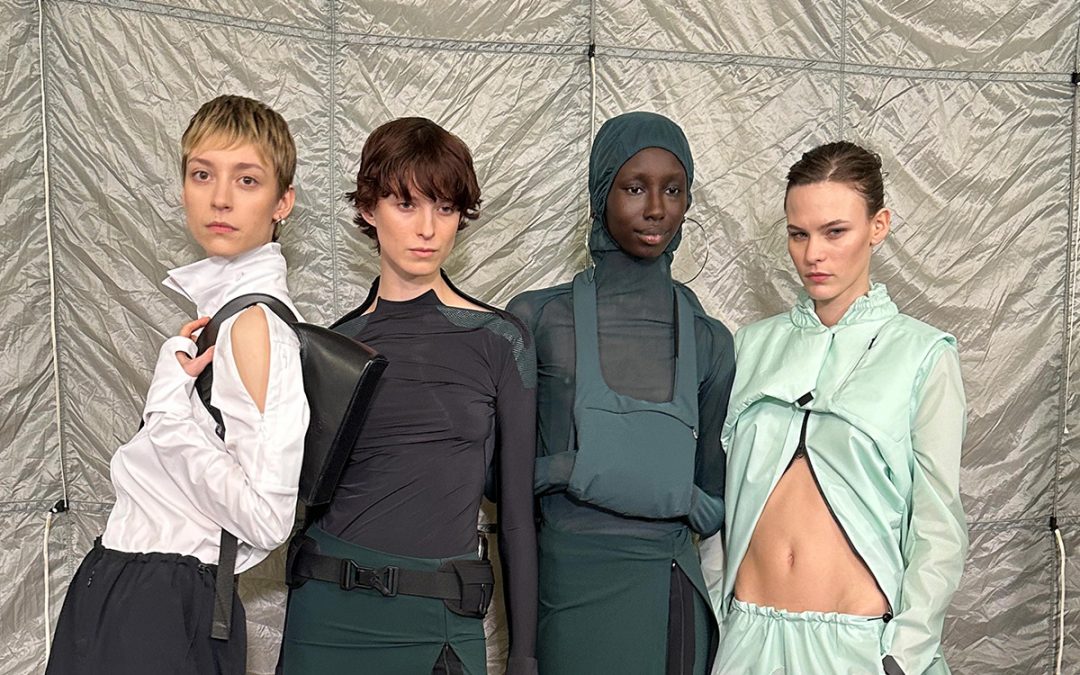
Fashion East has a reputation for giving a voice to young fashion creatives, steering the conversation, and highlighting the most innovative new names, with inspirational ways of spotlighting their work across Fashion Week.
Flying in from Hollywood, working alongside two different designers and co-ordinating a hair team for two shows seems like no easy feat, so we caught up with session and celebrity hairstylist Mark Hampton backstage at London Fashion Week to find out just how he works his magic.
Creative HEAD: Firstly, what does 40 years of London Fashion Week mean to you?
Mark Hampton: It means it started before I was born! But it also means heritage. I trained at Vidal Sassoon – his connections with fashion were so deep. For me he was the first person who transcended fashion and film and art. His inspiration for Bauhaus and cutting Mia Farris’ hair for Rosemary’s Baby were things that made me go ‘wow! This is where you can go with this job?’
CH: Is that what sparked your interest in taking your session work further?
MH: Yeah, and then working with Guido. I could see the industry from the true creative perspective that it should be.
CH: So, how do you navigate working with two designers for one show?
MH: I have a lot of ADD so I don’t think it really matters for me. I enjoy it more; I like the diversity and the challenge of trying to pull off two shows (normally we do three!). For me, it feels more like a show, the atmosphere is better because there’s less focus on one specific thing and there is more of a vibe.
CH: How do you keep the vibe positive and the team calm?
MH: Good assistants! My first assistant Clare [Hurford] is a legend – she really helps me with the production, separating the team and finding the strengths and weakness to play in our favour. When you’re doing two shows, the hair is very different. Olly’s show is predominantly guys, so you need barbers and people who are strong in cutting, whereas Johanna’s is more about styling, so you need people with a different mindset.
CH: How have you approached the hair looks for Fashion East?
MH: I think London is more about selling a character instead of selling clothes. For example, with Johanna’s collection, the clothing has a big focus on streetwear and functionality but on a very elegant level, so the hair must really reflect that character. You want to get into their psyche, what would they do if they were wearing these clothes? Did they have their hat on? Were they cycling and took their helmet off, and what would their hair look like? I think it’s important for Johanna that the person that wears her clothes looks like she could have done her own hair.
CH: We heard you’ve been using the Supernova Pro…
MH: Yes, it’s so fun! It’s so nice to have something that really works! And the fact that it’s professional means it’s going to do what I need it to do.
CH: How did you use it on the looks for Fashion East?
MH: We’ve straightened a few of the girls’ hair. On some of them that already had straight hair, we added a bit of texture as well. Then after I did the chignon, I used the straightening iron to accentuate some of the straighter pieces.
The page you requested could not be found. Try refining your search, or use the navigation above to locate the post.

,
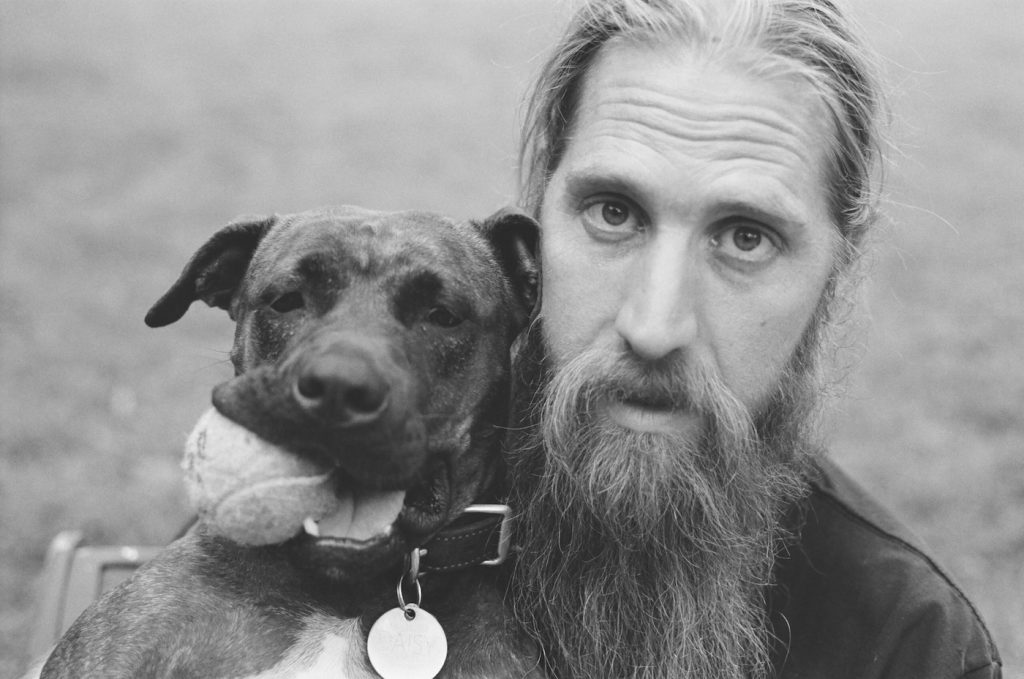 Duffy, photographed by Josh Olins Duffy, photographed by Josh Olins |
How did your career in hair begin? At the age of 12 I got a job on a Saturday at a local barber shop next to the bookies that my dad used to go to. £10 a day to sweep up, a 12-hour day. Then I needed to sort work experience and I was like, ‘Five days of work experience means 50 quid, happy days!’ And my mum said: “Not a chance! You’re going to London.” I applied to Vidal Sassoon and got a week’s work experience, so got the train up to London when I was 13. And it was quite a mad salon that one on Floral Street, there was Joseph, Agnes B. It was lively, and it just made sense to me. Why would I want to go back to school? At Vidal Sassoon I was treated like an adult, I was expected to behave like an adult. I had to achieve every day, and that for me is not just hairdressing, that’s apprenticeships across the board. |
|
Duffy, photographed by Josh Olins |
How did your career in hair begin?
At the age of 12 I got a job on a Saturday at a local barber shop next to the bookies that my dad used to go to. £10 a day to sweep up, a 12-hour day. Then I needed to sort work experience and I was like, ‘Five days of work experience means 50 quid, happy days!’ And my mum said: “Not a chance! You’re going to London.” I applied to Vidal Sassoon and got a week’s work experience, so got the train up to London when I was 13. And it was quite a mad salon that one on Floral Street, there was Joseph, Agnes B. It was lively, and it just made sense to me. Why would I want to go back to school? At Vidal Sassoon I was treated like an adult, I was expected to behave like an adult. I had to achieve every day, and that for me is not just hairdressing, that’s apprenticeships across the board.
You’re taught a work ethic, and that your effort reaps rewards. When I left school at 15, my first pay cheque at Vidal Sassoon as a full-time assistant was £40 a week for four days in-salon and a day in the training school. And my train from Surrey was £48 a week, so my parents helped me and I worked odd jobs. I did four days of greeting clients, sweeping the floor, cleaning the toilets, washing the bowls, taking the laundry out… but the reward was I got to watch these incredible hairdressers cut hair. And then one day a week, I got to learn a skill.
How did that kid working at Sassoon start his adventure into session?
I met Eugene Souleiman – he was in my friend’s clothes shop in Covent Garden buying some expensive Japanese denim – and he opened the door to a whole other world of hairdressing. “What do you mean you live in New York and you fly here?” – I had no idea what he did, but he was this incredibly alive character.
I was at the Seven Dials branch of Sassoon, and Beverly Streeter [from the agency Streeters] rang the front desk. They said it was my mum! “Duffy darling, it’s Beverly. Eugene told me to call, he’s got a show.” I phoned in sick! The show was Hussein Chalayan, and I specifically remember this crazy Frenchman with a Mohican or something, standing on a chair with a clipboard and a stopwatch around his neck. He gave this speech to all the models on how to walk, how to embrace the energy of the show. Everybody cheered and the show started…
So that was it – a session career awaited?
Well, I finished my apprenticeship and thought, ‘hang on, there’s got to be more to this’. I was cutting old ladies’ hair, making 600 quid a month. So, I left hairdressing and London. I thought that it just wasn’t for me. I got in a van and I drove around Europe for two years snowboarding. I came back and was working in my best mate’s mum’s cheese factory in Camberwell, and on the weekends I was driving a van for an antique store. It was the best time, skating every night with a couple of cans of beer with my mates. And then a friend rang, “I’m opening a barber shop, we’re looking for staff…”
An old friend of mine came into the barber shop and asked me to cut some guy’s hair for a picture for GQ. They wanted a Nike ‘swoosh’ in the side. I was like, ‘oh, interesting’. Then I did a couple of other little things with him, and I’d met a few people, kind of East London, cool, i-D, Dazed crowd. Then my girlfriend started working as a styling assistant, and I was like, ‘Let’s just give this a go’.
How seriously did you take it this time? Could you see a career unfolding?
I was maybe 20 or 21, and I ran into Eugene. He was living in New York still, his assistant had just left and he asked me to come to New York, to work with him. I thought it was cool, and asked him to book the tickets. He said: “No, you book the ticket, you move to New York. And once you’re here, you can work on the team.” So I said, “I’m not doing that!” But six months later, he asked me to join him again, this time in Italy. I asked: “Can I bring a mate because your team’s really scary?!” They were the best hairdressers in the world – Angelo Seminara, Rudi Lewis, Raphael Salley, Johnny Sarpong, Martin Cullen – they’re legends!
These were the people that I was able to learn from under Eugene’s team and so James Rowe and I took our skateboards, booked some EasyJet flights and flew to Milan! We didn’t sleep for two weeks. And if we did sleep, James and I were sharing a bed or sleeping on the floor of a friend, skating between shows because we couldn’t afford cabs. Incredible times, I learnt so much.
Fast forward to last September… how did it feel when your name was called out as the 2023 Most Wanted Hair Icon at Tate Modern?
I didn’t know what to say. I’d like to think I don’t have an ego. I for sure do, sadly. It felt like I’d achieved something. To have an industry say, ‘Congratulations, you’ve done pretty well’, was quite mega. Us session hairdressers wake up every day and you’re your own boss, you go to work and you try to forge your own path in what you do. Or you just turn up, which is what I’ve pretty much done for the last 20 years, turn up and see what the day brings you. But to understand that people are paying attention, that I’m doing something right, was amazing. And my son’s really proud. He took the trophy to school!
You made a point of saying a big thank you to your team…
Oh, it’s all about the team, particularly Lukas Tralmer, who’s now going out on his own; Dale Delaporte; Paddy McDougall and Laurence Walker. I can turn up to a show, be the best hairdresser in the business, but if I’ve got 75 or 85 models in Milan as I did for Bottega Veneta, and each one of them needs the nuance of that personality, I need my team. And if my team aren’t happy, if they don’t feel appreciated or acknowledged, if they don’t feel like they have a voice, then there’s no point in me trying to continue doing the job I’m doing.
The last season that I worked with Eugene, I think we did 29 shows in three cities, and you turned up and you did that show. Now, the expectation is huge. They have a lookbook being shot backstage. They have first looks, they have TikTok, they have Instagram, they have video. And shows are becoming more adventurous. You might have four hours, and the rehearsal ends up being two hours. So, then you’ve got to get four kids through each chair in two hours.
How would you describe your aesthetic? And which environment speaks to you more – the live show, the set?
I’ve built my career through mishaps and mistakes in a way. The perfection of imperfection is an incredible thing. On my journey to find perfection, I found something else I loved, which was imperfection in classicism. You’re trying to achieve something incredibly beautiful and classic, but once you get there, you’ve seen it already. It’s not new, it’s not evolved. So, the evolution came in either making something perfect, and taking it apart afterwards, or the journey there.
You can make a perfect silhouette, then as you’re undoing it in front of the camera, you suddenly see something like a shape that is so abstract. So let’s explore that. Let’s take a couple of frames, let me put a bit of wind in it, pull it apart a bit more. Let’s capture those moments because a show is instantaneous. But at a show, you’re presenting the reality, in three dimensions. If they’re wearing wigs and the audience is sitting on the floor, they’re looking up under the hairline – you’ve got to take it all into consideration. But when you’re in a studio working two dimensionally, there’s so much fakery that you can build and create. That is where that personal joy comes from. You can do the same silhouette on three different people, and you get a completely different result.
How would you describe your aesthetic? And which environment speaks to you more – the live show, the set?
I’ve built my career through mishaps and mistakes in a way. The perfection of imperfection is an incredible thing. On my journey to find perfection, I found something else I loved, which was imperfection in classicism. You’re trying to achieve something incredibly beautiful and classic, but once you get there, you’ve seen it already. It’s not new, it’s not evolved. So, the evolution came in either making something perfect, and taking it apart afterwards, or the journey there.
You can make a perfect silhouette, then as you’re undoing it in front of the camera, you suddenly see something like a shape that is so abstract. So let’s explore that. Let’s take a couple of frames, let me put a bit of wind in it, pull it apart a bit more. Let’s capture those moments because a show is instantaneous. But at a show, you’re presenting the reality, in three dimensions. If they’re wearing wigs and the audience is sitting on the floor, they’re looking up under the hairline – you’ve got to take it all into consideration. But when you’re in a studio working two dimensionally, there’s so much fakery that you can build and create. That is where that personal joy comes from. You can do the same silhouette on three different people, and you get a completely different result.
How do you keep yourself firing on all cylinders?
I can’t tell you there’s a super-rare book I look at in those times. My inspiration comes from my team, and from the creative environment, the creative team. They all bring something to the table and it’s my job and their job individually to puzzle it together. Anthony Turner said in i-D magazine, and I’ll probably misquote him: “After craft, it becomes only about taste”.
That hit the nail on the head. We can all be the best technical hairdresser – and everyone should try and be able to do those things – but after that point, what sets you apart is down to taste. And taste is evolving, my taste changes all the time.
I don’t think the hair I do now is anything like the hair I did 20 years ago, when I didn’t have a team to do everything. I look back at some of those pictures and they’re brilliant, but they’re totally different. We naturally evolve as creative people, so we do lose and gain clients. Sometimes we have lulls and it’s the same for me – because at the level that we are all aspiring to work at it, it becomes about taste.
It can be a punishing schedule in session. Do you still enjoy it all?
I feel incredibly blessed to have been given so many opportunities. I’ve seen the world by the age of 45, I’ve met every person I could ever wish to meet. The world that this industry has offered me is unlike any other world I could have ever imagined. So yes, I enjoy it. Maybe sometimes not as much because it can be exhausting. It can be monotonous sometimes – flight, car, hotel, studio, hotel, car, hotel – but that’s also part of the game.
But like Guido said, and I might misquote him too: “I still feel nervous going to work every day”. And that is the most important thing. The day I stop feeling nervous walking into a studio is the day when all the other stuff that goes with it doesn’t really make sense anymore. Because if I’m not pushing myself and my team, and I’m just taking a pay cheque and having supper in a nice hotel, it doesn’t add up. There’s something wrong.
The page you requested could not be found. Try refining your search, or use the navigation above to locate the post.